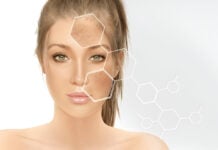Rosacea is more than just blushing or a flushed face. It’s a chronic skin condition that affects millions of people, often leaving them feeling frustrated and unsure about what’s causing their flare-ups. While most people are aware of common triggers like spicy foods, alcohol, or sun exposure, there’s a whole world of lesser-known factors that could be silently making things worse.
Let’s explore some of these surprising rosacea triggers and how being aware of them can help you take better control of your skin.
The Unexpected Side of Rosacea
If you’ve been managing rosacea for a while, you’ve probably already cut back on the usual suspects like hot drinks, intense workouts, and harsh weather. But despite your best efforts, flare-ups might still appear without warning. That’s when you start asking, “What else could it be?”
1. Demodex Mites: Tiny Creatures, Big Problems
This might be one of the strangest triggers of all. Everyone has microscopic mites called Demodex living on their skin, usually without any issues. But in people with rosacea, these mites tend to appear in higher numbers. Research shows that when these mites multiply too much, they can irritate the skin or carry bacteria that inflame it even more (Forton & De Maertelaer, 2019). If your flare-ups don’t respond to typical treatments, it could be worth asking your dermatologist about treatments that reduce mite populations.
2. Gut Health: What Happens Inside Affects Your Skin
Believe it or not, your digestive system might be playing a bigger role in your rosacea than you think. Studies have found that people with conditions like small intestinal bacterial overgrowth (SIBO) and irritable bowel syndrome (IBS) often also struggle with rosacea. In fact, when SIBO was treated in one study, many patients saw significant improvements in their skin (Parodi et al., 2016). If your skin seems reactive no matter what you do on the outside, it may be time to take a look inside.
3. Hidden Irritants in Skincare
Sometimes the very products you use to soothe your skin can be doing more harm than good. Many people with rosacea don’t realize that fragrances, alcohol-based products, or even natural essential oils can irritate already sensitive skin. Even popular anti-aging ingredients like retinoids and alpha hydroxy acids (AHAs) can be too much. When it comes to rosacea, simple and gentle is often the best approach.
4. Stress: The Emotional Trigger That Shows on Your Skin
We all know that stress takes a toll on our health, but it can show up on your skin too. Emotional stress releases cortisol and other chemicals in the body that cause inflammation. This can lead to visible flushing and irritation. Finding ways to manage stress such as meditation, light exercise, or simply getting more rest can make a noticeable difference in your skin’s behavior.
5. Weather Whiplash: More Than Just the Sun
While sun exposure is a well-known trigger, it’s not the only kind of weather that affects rosacea. Cold winds, dry indoor heat, and sudden changes in temperature such as stepping into a warm room after being outside in winter can also cause flare-ups. To protect your skin, try layering scarves in the winter and using a humidifier indoors during dry months.
6. Caffeine Confusion: It’s Not Always the Coffee
Many people avoid coffee because they believe caffeine makes rosacea worse. But it turns out, it might not be the caffeine itself, but the temperature of the drink. In fact, a large study found that people who drank caffeinated coffee actually had fewer rosacea flare-ups (Li et al., 2018). Caffeine may have some protective effects, possibly because it helps narrow blood vessels. So if you’ve ditched coffee entirely and your skin hasn’t improved, an iced version might be worth a try.
7. Hormonal Fluctuations: A Monthly Pattern
Some women notice that their rosacea symptoms become worse around their menstrual cycle. Hormonal shifts, particularly a drop in estrogen, can make blood vessels more reactive and skin more sensitive. While this area still needs more research, keeping track of your symptoms alongside your cycle may reveal patterns that help you plan ahead or discuss options with your healthcare provider.
Finding Your Personal Triggers
Rosacea can feel unpredictable, but learning to listen to your body and track your reactions is incredibly empowering. What causes a flare in one person might be completely harmless for someone else. That’s why it’s helpful to keep a diary of your symptoms, skincare, diet, and stress levels. Over time, patterns will likely emerge.
The more you learn about the unique ways your skin reacts, the more control you’ll gain. Managing rosacea is a journey. By digging deeper into lesser-known triggers, you can avoid unnecessary flare-ups and feel more confident in your skin.
References
- Forton, F., & De Maertelaer, V. (2019). Demodicosis and rosacea: Epidemiology and significance in daily dermatologic practice. Journal of the European Academy of Dermatology and Venereology, 33(10), 1915–1923. https://doi.org/10.1111/jdv.15684
- Li, S., Cho, E., Drucker, A. M., Qureshi, A. A., & Li, W. Q. (2018). Caffeine intake and risk of incident rosacea in women. JAMA Dermatology, 154(12), 1394–1400. https://doi.org/10.1001/jamadermatol.2018.3302
- Parodi, A., Paolino, S., Greco, A., Drago, F., Mansi, C., Rebora, A., & Parodi, A. (2016). Small intestinal bacterial overgrowth in rosacea: Clinical effectiveness of its eradication. Clinical Gastroenterology and Hepatology, 14(4), 504–510. https://doi.org/10.1016/j.cgh.2015.10.030












